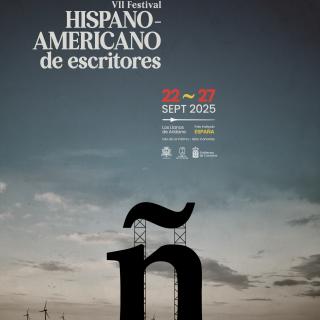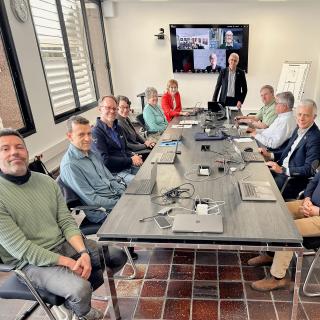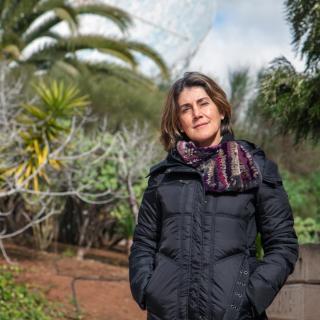“Although giant telescopes are under construction, astronomical images with good resolution cannot be obtained unless they use Adaptive Optics”, warns Norbert Hubin, head of instrumentation at the Very Large Telescope (VLT), a system of four 8.2 m telescopes installed at the European Southern Observatory (ESO) Observatory in La Silla, Chile. It was on the telescope of 3.6 m of that observatory where the first system of Adaptive Optics in the history of the Astronomy (called "COME-ON") was tried. This engineer was in Tenerife this week attending the conference on "Adaptive Optics for Extremely Large Telescopes" (AO4ELT5), organized in Puerto de la Cruz by the Instituto de Astrofísica de Canarias (IAC).
The VLT is really helping in develop the technology towards the ELT.
Continuous interaction with astronomers, where you can adapt the design of the system to the real scientific goal, is very important.
Multi-object spectroscopy for observing very distant galaxies will be the next challenge.
Question: As the person in charge for the Adaptive Optics (AO) in the VLT, why are these systems so important in current large telescopes and in the future European ELT?
Answer: First, you have to know that the turbulence of the Earths atmosphere limits the angular resolution of the telescope. Even if you build a big telescope, the resolution you can get if you don’t do anything about this turbulence, corresponds to a resolution of a 10 cm telescope. So you can build a 3 m, 8 m, 10 m or 40 m telescope and the resolution would still be that of a 10 cm telescope. To the full potential resolution you need Adaptive Optics which is a system that measures the disturbances of the atmosphere and corrects for it. This is what we are trying to do because ESO is building big telescopes. We started with the 3.6 m telescope with its AO “COME-ON”, and then “COME-ON+”, and later, “ADONIS” with its 52 actuators to correct the atmospheric turbulence and afterwards in the VLT. Finally in the ELT we are pushing the technology further.
Q: How useful is the experience of building the VLT for the future European ELT?
A: It has been a very long effort to develop the technology on the VLT. We produce the first generation of adaptive optics systems for “NACO”, “SINFONI”, etc., instruments that were dedicated to near infrared (NIR). Then we brought the laser star guide system with AO to the telescope which allows us to have much better sky coverage and better telescope performance. Now we are pushing further with the VLT towards the visible with the multi-laser guide stars in its secondary mirror that is exactly the configuration we need for the ELT. The VLT is really helping in develop the technology for the ELT.
Q: What are the shortcomings of adaptive optics systems?
A: Up to now, it was mostly the practical technology because the ideas were there but we needed to push different adaptive optics technologies, such as lasers, large deformable mirrors, fast real time computing, wave front sensor detectors with low noise which are fast enough…These are the technology we have developed for the VLT and we are continuing for the ELT.
There are several problems we have to deal with when designing AO systems. One of the main is to make sure your error budget – the different places where you make errors- is under control. The second thing which will be very specific for the ELT, is the interaction between the AO system and the telescope. Wavefront control of the telescope together with its AO and that they work fine together without too much overhead – when you point to a new star it does not take half an hour to tune the system- it should be automatic. This will be a challenge for the ELT.
Q: After AO systems, what are the next technological steps in future telescopes?
A: It will be to achieve the high contrast needed to search exoplanets, to achieve very good performance with AO and the telescope, with coronography... There are ideas for moving towards multi-object spectroscopy for observing very distant galaxies close to the origin of the Universe. This kind of instruments, which are very complex, will be the next challenge.
Q: To what extent is it necessary to have meeting like this and collaboration between engineers and astronomers for the development of AO?
A: It is crucial because we really need to understand the needs of the astronomer. This continuous interaction between both, where you can adapt the design of the system to the real scientific goal of the astronomer, is very important. Otherwise engineers will develop a nice machine but not necessarily fulfill the needs of the astronomers. For that reason, this kind of meetings is very important, to have this interaction, to show what you need and what you want. We need to work together at the definition phase but also in the commissioning phase –when you are really close to the installation on the telescope- because the way the system is used or calibrated depend fully on the science you want to do. In the middle of the process we can have some collaboration but it is not so crucial.



